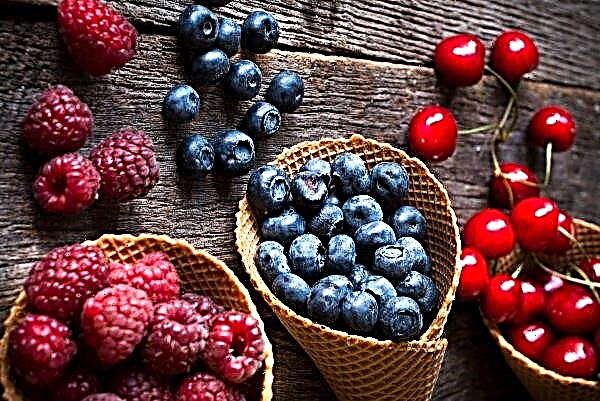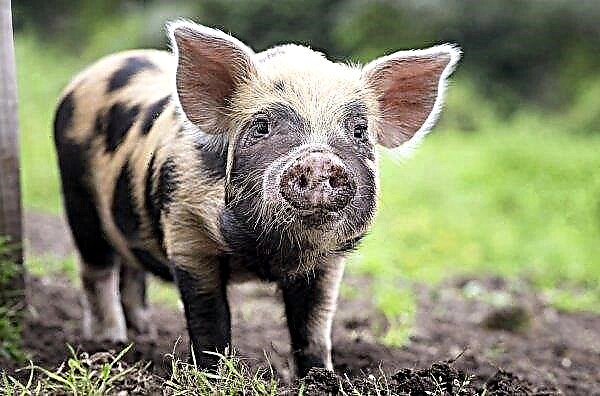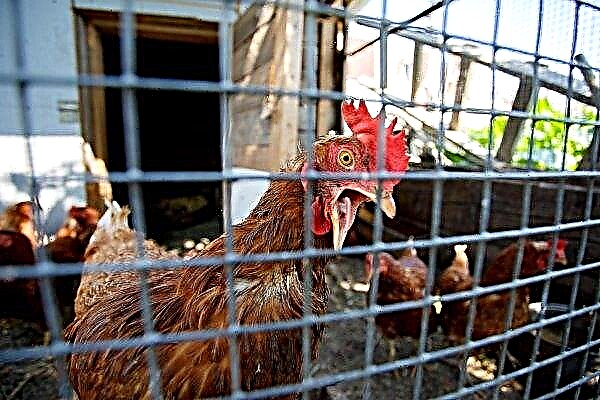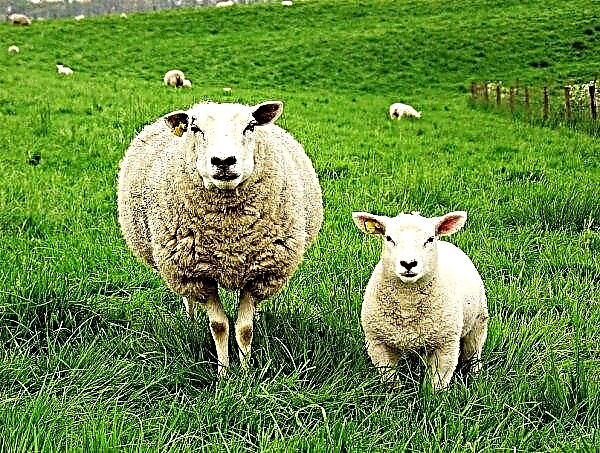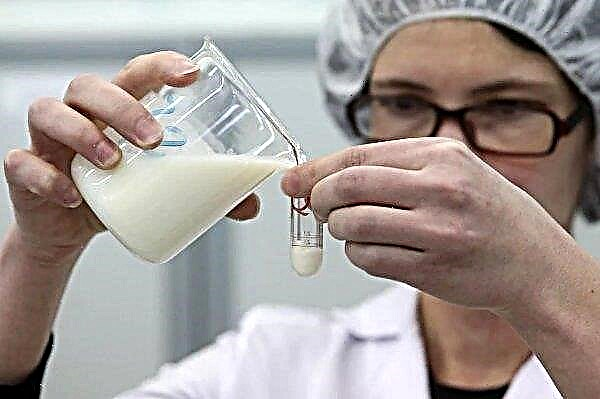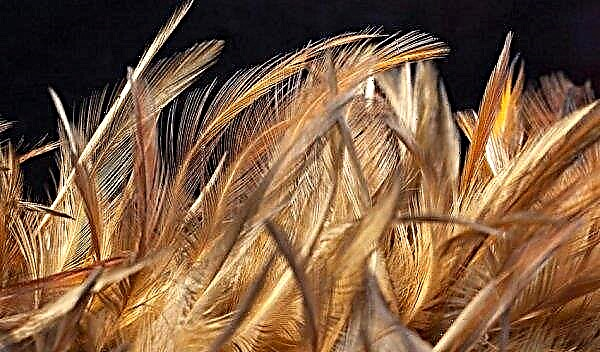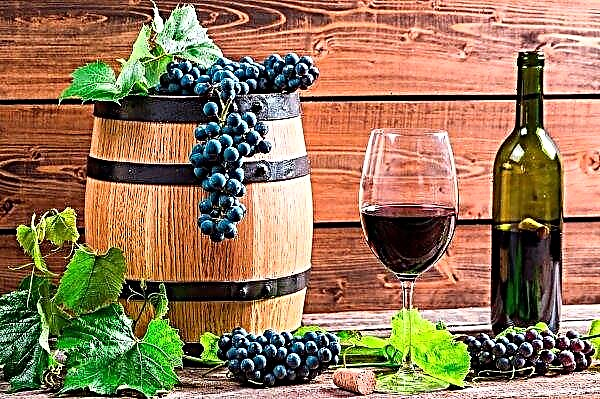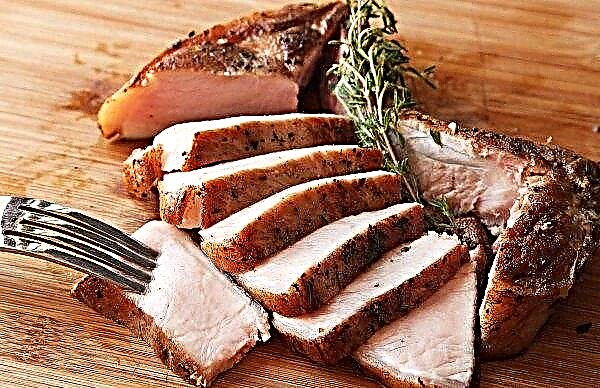Truffle is a mythical and mysterious mushroom that evokes the strongest emotions and curiosity. Many more people heard praise about him than actually saw or tried it. And even those who ate them find it difficult to compare taste with high cost and rarity. The article will tell about what the truffle looks like, about its varieties, methods of collection and fields of application.
What does a whole truffle look like in a cut?
Truffles, despite their inconspicuous and unattractive appearance, are a valuable and delicious product that is served in the most sophisticated restaurants in the world. Their fruity fleshy bodies, which are in the form of a tuber, smooth or densely covered with tuberous growths outside, grow underground at a depth of 20-30 cm, which is the result of adaptation to environmental conditions.
Truffles are mycorrhizal earth fungi, therefore their mycelium is usually in close symbiotic relationship with the root system of trees and is of great importance in ecology and the exchange of nutrients, biological and chemical characteristics of the soil and drought tolerance. Mycorrhizal fungi cannot grow in the ground without a host tree, receiving from it carbohydrates necessary for development. The mycelium is usually located in the upper layers of the soil and surrounds the desired tree.
Since fruiting bodies grow underground, sexual spores cannot be carried by wind or water. Dispersion of spores takes place with the help of animals that eat mushrooms. For successful dispersal, these spores must pass through the gastrointestinal tract, and the hard chitinous membrane protects them from the aggressive environment. The carriers can be birds, deer, wild boars, rodents, voles, squirrels, chipmunks, which the ripened mushroom attracts with its strong aroma.
All fresh fruiting bodies must be firm to the touch and not loose. The shape of the tuber is usually round, oval, slightly flattened; however, the configuration of each instance is unique, and its size can vary from the size of a pea to a tennis ball or even a grapefruit. Depending on the species, these mushrooms are found in various color options - from deep black to white.
Black truffles should be charcoal or dark brown in color with white marble streaks of the inside (glebe) in the section. The blackness of the fruiting body is a sign that the fungus is fully mature. The outer surface resembles the skin of a dog's nose. The average weight of winter black mushroom is 30-60 g.

White truffles have a creamy white or tan color, sometimes with a reddish tint, and have a richer flavor than black-looking specimens. The chefs who describe a freshly dug white truffle claim that its aroma is able to fill the entire room, spread and smell on the street through an open window.
Varieties of Truffles
The genus Tuber (real truffle) has about 185 species, which are classified both by their biological genus and by their gastronomic value. In addition, in 2010, scientists identified 11 groups, which include all the descendants of one common ancestor.
The most valuable types are:
- winter white;
- winter black.

Other culinary truffles include:
- nutmeg;
- Chinese;
- Himalayan
- summer;
- autumn;
- scorson;
- Oregon.
Where and when to meet
Truffles grow in broad-leaved forests on calcareous soils, preferring a warm climate free of frost and summer winds, found in Europe and Asia. Each type of tree affects the appearance and taste of mushrooms, which grow 6-8 months, and in addition to the summer black species begin to appear in the fall and disappear in mid-winter. Top quality products are sourced mainly from France, Spain and Italy. Secondary markets include China, Turkey, Croatia, Slovenia, North Africa, the Middle East and the USA.
The black variety or perigord, the second most profitable species, is named after the region of the same name in France. It forms mycorrhiza with deciduous trees - oak, hazelnuts, hornbeam, beech, pine, linden, aspen, chestnut, poplar. Fruiting takes place from December to the end of March. The main French truffle sites are located in the south in Perigord, in Provence, the Alps, on the Cote d'Azur, although mushrooms are found in most of France.
 The Perigord region is the most famous source of truffles, and all French specimens are called Perigord, even if they come from another region. This mushroom is still considered a national treasure of France, and the inhabitants of the country call this special delicacy “black diamond”.
The Perigord region is the most famous source of truffles, and all French specimens are called Perigord, even if they come from another region. This mushroom is still considered a national treasure of France, and the inhabitants of the country call this special delicacy “black diamond”.
Summer or burgundy and burgundy mushrooms are found in most of Europe. They have a fragrant flesh of a darker color and are associated with root cells of various tree species and shrubs - birch, poplar, elm, linden, mountain ash, willow, hawthorn, hazel. The season of summer species lasts from May to August, and the burgundy species is collected from September to November.

White truffle is the highest quality look. The Italians call it the “White Madonna Truffle”. It occurs mainly in the Italian regions of Lange, Monferrat, Molise, in the Piedmont region in northern Italy in the countryside around the cities of Alba and Asti. The season of fresh white truffles is usually from October to the end of December.

Whitish truffle is found in other rural areas of Italy - Tuscany, Abruzzo, Romagna, Umbria, Lazio, Marche and Molise. It is not as fragrant as from Piedmont, although it is similar in taste to it. On the northwestern coast of the United States, several species of mushrooms grow - Oregon black, brown, spring and winter white. However, not only in Europe, but also in the southern hemisphere on the territory of New Zealand in Australia, this amazing delicacy is growing, the first copy of which was received in 1993.
On the territory of Russia, this valuable mushroom is extremely rare, but the Central European lands, the Black Sea coast of the Caucasus, the Middle Volga region, and the Southern Urals possess suitable conditions for its growth. Unfortunately, hidden development makes it impossible to establish the distribution areas of this culture, and only point-of-sighting sites are included in the statistics. Sometimes you can independently discover truffles under the beautiful foliage - midges curl over them.
Did you know? The first statements about truffles appeared in the Sumerian writings in the II century BC. e. These mysterious and mythical mushrooms were considered the result of lightning, heat and moisture in the ground (Plutarch), tuberous roots (Cicero) and children of the earth (Dioscorides).
What smells and what tastes
It is difficult to describe all the nuances of the intense aroma and the earthy taste of the truffle - it really needs to be experienced. People who have been able to taste fresh authentic truffle note its special aroma. The definitions of “musky”, “garlic”, “sulfur” and “anxious with woody notes” are very common. It is believed that part of the distinctive aroma comes from the organic compound androstenone - a hormone that is produced by male pigs, which makes female pigs wonderful truffle hunters.
Different types of mushrooms have different sets of aromatic molecules at each stage of their development. There are about 35 odorants, the smell of which varies from fleshy and dusty to oily and creamy.

For example, dimethyl sulfide smells of sulfur - it is released by 85% of the truffle species. Mushrooms can generate this substance themselves, but it can also be produced by bacteria that intensively colonize truffles. Other ordinary truffle aromas smell like chocolate and whiskey, and hexanal, which smells like grass, can also come from both the life of the microbes and the fruit bodies themselves.
The sharpness of the aroma is not for the pleasure of gourmets. It is vital for truffles, because the reproduction process depends on how animals smell under the ground, dig and eat a mushroom, spreading spores in the environment.
Chefs around the world enthusiastically use truffles, proudly highlighting them on their menu to attract both connoisseurs of mushrooms and lovers of expensive food. But the taste of this delicacy is significantly inferior to its aroma. Determining and summarizing the taste of truffles is not an easy task, but they have an earthy, musky, burning taste of some popular aerial mushrooms. When describing the taste, some people use the concepts of oak, nut and earth, sweet and juicy with burning piquant notes, similar to black olives.
 Often the aroma of fresh truffle is stronger than the smell of the other components of the dish, but even the strongest black varieties with their taste will not suppress the expressiveness of the taste of other ingredients
Often the aroma of fresh truffle is stronger than the smell of the other components of the dish, but even the strongest black varieties with their taste will not suppress the expressiveness of the taste of other ingredients
Many factors can affect the individual taste of truffles:
- the roots of species trees to which they attach during growth;
- soil characteristics;
- collection time;
- region of growth.
 Although it is generally believed that the darker the truffle, the stronger its taste, but the nuances are so complex and varied that you can understand them only with a few tastings in the composition of dishes.
Although it is generally believed that the darker the truffle, the stronger its taste, but the nuances are so complex and varied that you can understand them only with a few tastings in the composition of dishes.
How much is a truffle
At the beginning of the last century, truffles were widely used in most cases, since they were available, produced in sufficient quantities and satisfied the demand.Today they are relatively rare, and as a delicacy are used in expensive dishes or in special cases. This is due to the growing industrialization and the further withdrawal of truffle areas from agricultural holdings.
Another reason for the overestimated price of truffles is high demand. Today it is not possible to obtain mushrooms on a large scale, which is associated with the difficulty, the specifics of growing and the length of the payback of invested funds, therefore access to the product is limited.
It is difficult to determine the objective market value of mushrooms, since basically the entire collection is sold at auctions held during the mass gathering and special festivals, and the final price of the product depends on the number of bids. Pricing is influenced by the size of the fruiting body, weight, species, season and collection volumes.
White varieties are the most expensive of all tuber-like mushrooms. In 2014, a white half-kilogram copy (named "the largest in the world") was sold at Sotheby's for 46 thousand pounds. In Italy, at an auction in the city of Alba, 11 copies of the Piedmont variety were sold for 274 thousand euros. 1 kg of Piedmont variety costs an average of 6-8 thousand dollars, depending on the volume of the crop, the quality and size of individual mushrooms. This means that for one small mushroom in 20 g you need to pay up to $ 100. Small specimens (up to 12 g) are sold for 4 thousand dollars / kg, and for larger ones you will have to pay much more.
 In the menu of prestigious restaurants, the most elementary dish seasoned with grated truffle costs no less than $ 50, that is, each gram of seasoning for a culinary dish in domestic restaurants will increase the price of a dish by 500-1000 rubles.
In the menu of prestigious restaurants, the most elementary dish seasoned with grated truffle costs no less than $ 50, that is, each gram of seasoning for a culinary dish in domestic restaurants will increase the price of a dish by 500-1000 rubles.
The price for 1 kg of Black Perigord variety is about 1.5 thousand dollars from farms and 2 thousand from retail suppliers. Black summer varieties sell at 1.5 thousand dollars per kilogram. And 1 kg of summer mushroom from Italy costs 300-400 dollars. The Chinese product is the cheapest ($ 250 / kg) and is far inferior in quality to Italian and French mushrooms in flavor.
Truffle Harvest Features
Truffles grow one at a time in random places deep underground among the roots of the host trees and therefore it is impossible to visually detect them. When fruiting bodies are found near the surface of the earth, they crack, reaching full size, and experienced collectors can detect them. In addition, in the morning and evening you can see a swarm of small yellow flies hovering over the mycelium. Sometimes a person is sensitive enough to the smell of mushrooms, can find them.
Important! The found mushroom must be carefully separated from the roots of the tree so as not to damage them. After that, part of the precious find is laid back into the ground so that the spores can sow new areas.
But usually for the natural collection of delicious raw materials to help people use specially trained animals with a delicate sense of smell - pigs and dogs. Domestic pigs have a good sense of smell and are able to smell truffles at a depth of 1 m. Its aroma contains a chemical substance identical to pork pheromones contained in the saliva of sexually mature boars; therefore, it is attractive to female pigs.

But such hunters not only found mushrooms, but also ate a significant part of the prey, breaking the mycelium and causing significant damage to the truffle sites. In Italy, the use of pigs for hunting mushrooms has been banned since 1985 due to damage caused by animal mushrooms during digging, which led to a decrease in productivity in the area by several years.
Dogs, possessing the same delicate sense of smell, are usually more obedient than pigs and are not at all interested in eating mushrooms. Dogs are trained for the search from an early age, accustomed to the smell of prey and mixing the mushrooms themselves with food. Such dogs (truffle dog) are expensive (up to 5 thousand dollars) and the owners are very protective of them. But such investments quickly pay off due to high prices for the extracted delicacy.

This old-fashioned ancient collection practice attracts special interest in truffles and surrounds their collection with mystery - an elite and valuable product cannot be obtained in any other way. Sometimes, during the collection season, special excursions are conducted for tourists and lovers of "silent hunting."
Truffle Applications
Mushrooms are highly regarded in the Mediterranean, Middle Eastern and international gourmet gourmet cuisine. Since the truffle is very expensive, it makes no sense to serve it with something that will dominate its taste, for example, add it to chili. Even wines should be carefully selected for dishes with these mushrooms, avoiding strong aromas and acidity of the drink.
Important! White truffles are best consumed fresh, cutting them into a warm dish on a special grater, because with strong heating they lose most of the flavor. Black varieties can be cooked with heat treatment.
Excellent aroma and intense earthy taste of mushrooms can turn pasta, egg dishes, risotto, scallops, foie gras or white meat into delicious dishes. Their unique taste goes well with sophisticated appetizers and is ideal for aioli or as a side dish for appetizers such as french fries. Some branded cheeses also contain slices of this delicacy.
Because of their high price and pungent aroma, truffles are used sparingly, so there are products that allow you to evaluate the gastronomic characteristics of a delicacy in cheaper and more convenient preparations - truffle oil, salt, honey, extracts, alcoholic tinctures.

There are many brands of oil, each with its own unique formula. Some oils are seasoned with natural or chemical flavors that duplicate the taste and aroma of truffles, while branded manufacturers make a quality product from olive oil and real mushrooms.
Salt allows you to enjoy a unique taste, without adding excess fat or oil to the main dish, but using it as a final ingredient. The canning industry produces ready-made dishes - risotto, tagliatelle pasta, mushroom paste sauce, canned black truffles. Ready-made and canned foods allow you to enjoy a delicacy regardless of the harvest season.
Did you know? If you put the truffle in the refrigerator next to the eggs, then the latter will have a distinct taste of the delicacy when used.
Can truffles be grown artificially?
Despite numerous attempts to cultivate truffles, it still seems that they have not been able to achieve the same taste as those that grow in natural conditions, and white species cannot be artificially grown in general. There have been many attempts to farm black delicacies, although this complex and lengthy process can take decades.
Some of these endeavors were successful, but the most reliable source is still their prey in the wild. Recent attempts in the United States and Australia to recreate truffle-friendly habitats by planting mycelium seedlings of chestnut, oak, and hazelnut seedlings have shown modest success, the collection volume was inconsequential and rarely suitable for use as a delicate raw material.

Truffles today are farmed and harvested in the natural environment. They are served in many restaurants, and if you have the opportunity to try dishes with this delicacy, do not deny yourself the pleasure to appreciate the subtlety of the taste and aroma of this mushroom.

